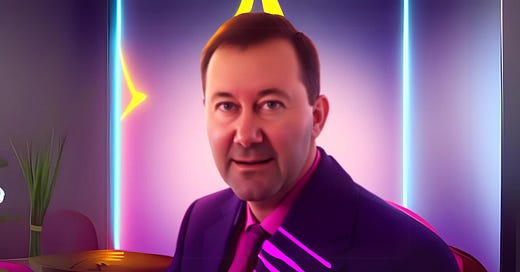Elite Trader Insights: Gary Norden
Episode 21: Keeping the Lost Art of Order Flow Trading Alive
Each week we try to unlock the collective wisdom of the Trading Elite. Strategies and unique insights from hours of interviews with top traders, sliced into bite-sized pieces and delivered to your inbox for your pleasure.
Gary Norden, a seasoned trader with over three decades of experience, offers deep insights into the trading world. He started his career at a young age, immediately after high school, and quickly ascended in the turbulent trading environment of the Japanese warrants market during its meltdown. Norden’s unique approach, shaped by starting in a market crash, emphasizes risk management, quick decision-making, and adaptive strategies, rather than following traditional trading norms.
Key Learnings and Takeaways from the Interview
1. Immediate Risk Management:
Norden stresses the importance of acting swiftly on small losses to avoid larger ones. He learned early to cut losses quickly and not carry the burden of trying to recover from significant downfalls. As he puts it, “If I got this wrong, you could make or lose hundreds of thousands of dollars...cut quickly.” Like me, he also suggests that a good futures trading strategy should have a correllation of ~0 with the overall market (ie you should be able to make money when the market rises, and falls). He suggests that at the moment most hedge fund returns are ~80% correllated to the overall market.
2. Skepticism Towards Technical Analysis:
Throughout his career, Norden observed that traditional technical analysis often fails traders, especially when they rely on overly simplistic or generic trading signals. He argues that trading requires a deeper understanding of market mechanics rather than relying on conventional indicators.
3. Advantages of Order Flow Trading:
Norden explains that understanding order flow—seeing who is buying and selling and at what levels—provides a crucial edge. Traders can identify weaker players in the market and exploit these inefficiencies, particularly in how retail traders use predictable strategies based on technical analysis.
4. Value of Real-Time Decision Making:
One of Norden’s key strategies is to trade based on real-time market information rather than predictive models. This approach minimizes exposure to sudden market shifts and allows for adjustments that algorithms and delayed responses cannot make efficiently.
5. High-Frequency Trading (HFT) Misconceptions:
Norden clarifies common misconceptions about HFT, noting that while HFT can affect market dynamics, its impact on individual retail traders is often overstated. Instead, he suggests focusing on understanding the immediate market context and trading within that framework.
6. Challenges of Long-Term Holdings:
Contrary to popular belief, Norden argues that holding trades longer increases risk. He advocates for short-term trades as a way to control risk exposure, especially when trading with personal capital where risk management is paramount. For example the Risk / Reward of a 1 minute trade is much better known than the Risk / Reward of a 3 week trade (this is one of the key reasons I choose to Day Trade vs Swing Trade).
7. Market Making Insights:
He shares insights from his time as a market maker, emphasizing the difference between market making and front running. True market making involves filling large orders and managing complex risk, rather than merely anticipating and capitalizing on order flows. He believe that futures is the ‘fairest’ product to trade as it’s not routed through a market market (vs equities etc).
Related Reads:
8. Impact of Trading Environment on Skill Development:
Norden discusses how the current trading environment, dominated by algorithmic trading, might lead to a degradation of traditional trading skills. He suggests that while technology provides tools, it also potentially dilutes the rigorous skill set once required to trade effectively. He also encourages trade to beware of going down rabbit holes. “When you have an edge, grind that edge, stay away from the noise.”
9. Education and Preparation:
He advocates for robust education and preparation, drawing from his own experiences where hands-on trading on the floor taught him invaluable lessons that modern traders might miss in a purely digital environment.
10. Longevity in Trading:
Finally, Norden attributes his longevity in the trading industry to adaptability and humility. He advises traders to continually evolve their strategies in response to market changes and to always be prepared for the unexpected.
Perhaps it’s because personally I struggle to get my head around complex options strategies, but I found Gary to be one of the most intelligent people I’ve listened to throughout these interviews.
I loved his blunt observations, for which I share many of these views. For example, his first hand experience that the professionals prey on the ‘weak’ (ie Retail Traders using traditional technical analysis) when trading a market has been repeated by many high profile players in the industry, and is something traders need to be aware of. His follow up thoughts in terms of why TA is so popular (ie it’s driven by demand from retail traders because it’s easy - doesn’t take years of learning) is also one of the major reasons I’m consistently skeptical of the benefits of TA. “What they want is not good for them”
Finally, can’t go past the golden rule: “When you have an edge, grind that edge, stay away from the noise.”
Cheers
Marto







